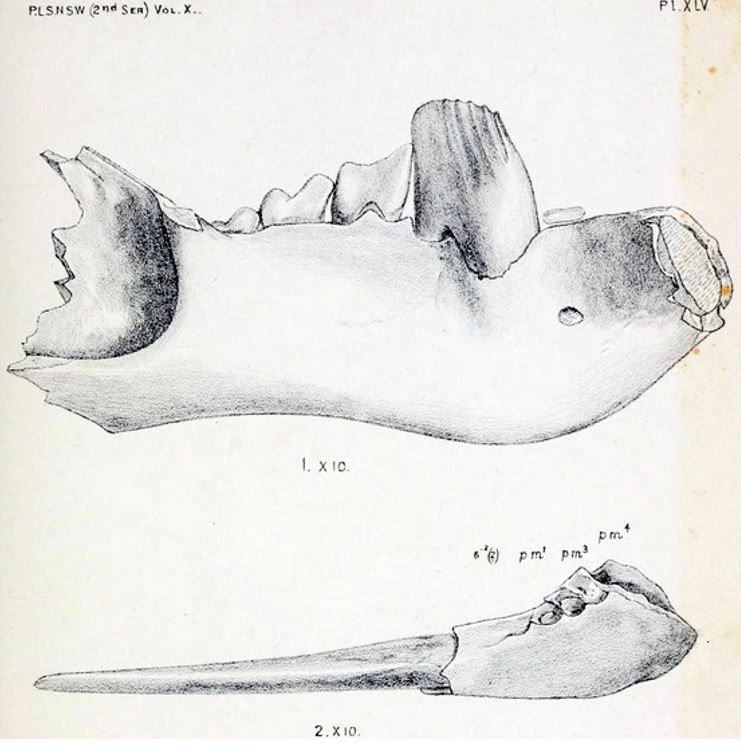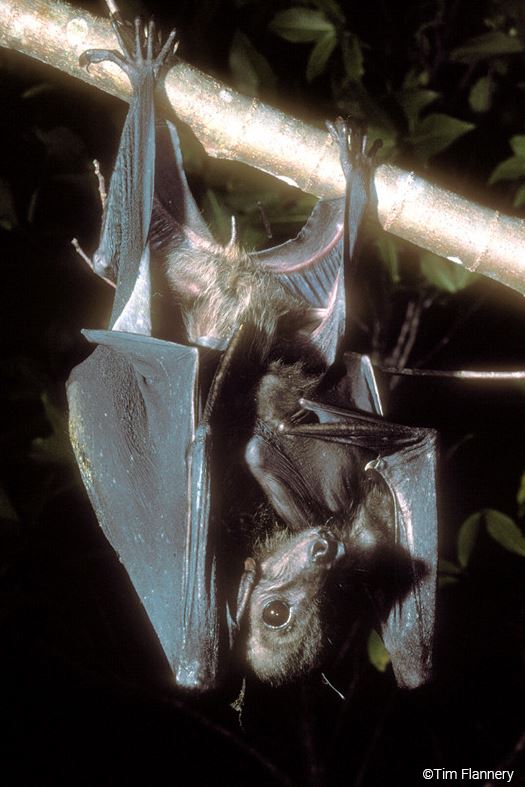
Goosebeak or Cuvier’s beaked #whale (#Ziphius cavirostris): described as a fossil in 1823 but realised in 1872 to be the same as beached specimens reported in 1820s but given different names. Ziphius is near-globally distributed (pics: specimens from Bay of Biscay; NOAA) 2/n 





Bush dog (Speothos venaticus): named as a fossil in 1839 - which explains Speothos, meaning ‘cave wolf’ - and described alive 1843. The same person, Danish naturalist Peter Wilhelm Lund, described the fossil AND living animals, but ... 3/n (pics Attis; Bonne1978; CC BY-SA 3.0) 

... failed to realise they were the same thing: he named the living animals Icticyon, and this name was for used for #Speothos until well into the 20th century. For more on Speothos and its affinities, biology and conservation, see ... tetzoo.com/blog/2022/1/5/… #dogs #mammals 4/n
False killer whale (#Pseudorca crassidens): described as a fossil by Owen in 1846 for a skull found in the Lincolnshire Fens of east England, but then discovered as a modern animal thanks to strandings of 1861 and 1862 [pics PD; Juan Ortega, CC BY-SA 3.0] 5/n #whales #cetaceans 



Mountain pygmy possum (#Burramys parvus): described from bones preserved in #Pleistocene owl pellets in 1896 by Broom, and immediately noted for its distinctive teeth. Found alive in a ski lodge in the Australian Alps in 1966. Only extant member of its clade (Burramyidae) 6/n 



Chacoan #peccary (Catagonus wagneri): named as a fossil by Rusconi in 1930; recognised as a living species in Argentina in 1974 (but already known to local people as Tagua). Some experts argue that it should be renamed Parachoerus wagneri. 7/n [pics Gasparini et al. 2017; PD] 



Bulmer’s fruit bat (Aproteles bulmerae): described 1977 from New Guinea as a fossil, reported from modern bones in 1980, then discovered alive. The one colony then mostly eradicated by hunters. Of uncertain status; possibly persisting. Pics from EDGE: edgeofexistence.org/species/bulmer… 8/n 



#Floresomys naso, a fossil murid #rodent from #Flores named by Musser in 1981. The generic name was preoccupied by a fossil sciuravid rodent, so later renamed Paulamys naso. A live individual was reported in 1991. One of many endemic Flores murids (pic: Veatch et al. 2019) 9/n 

In 1887 Herluf Winge described fossil #murids from the Brazilian Lagoa Santa caves: among them was the new species Scapteromys labiosus. This species, now referred to the crimson-nosed rat genus Bibimys, was reported alive in 1980. B. labiosus pic from Gonçalves et al. 2005. 10/n 

Hesperomys simplex was another fossil murid described from the Lagoa Santa caves by Winge in 1887, but also reported by him as occurring in modern-day owl pellets, and thus still be alive. A Paraguayan #murid named Oryzomys wavrini was described in 1921, aaaand... 11/n 

..... was shown by Voss & Myers (1991) to be the same thing as Hesperomys simplex, the name currently used for this taxon is Pseudoryzomys simplex. It’s sometimes called the ratos-do-mato or Brazilian false rice rat. I wrote about rice rats here ... web.archive.org/web/2017030823… 12/n
FINALLY, a living #rodent from Uruguay and Brazil, described in 1955 as Holochilus magnus, was shown by Voss & Carleton (1993) to be the same thing as another #Pleistocene fossil species named by Winge in 1887, Hesperomys molitor (image from Voss & Carleton 1993). But... 13/n 

.... restudy showed that it was distinct from both Holochilus (the semiaquatic web-footed rats) and Hesperomys (nowadays synonymous with Calomys, the vesper mice) and deserving of its own genus, so today it's Lundomys molitor. Here's a pic of a live one... flickr.com/photos/rothfau…
FINALLY FINALLY: this is not a complete list nor intended to be :) It's mostly a recycling of material I prepared for an article published in 2006.
• • •
Missing some Tweet in this thread? You can try to
force a refresh























